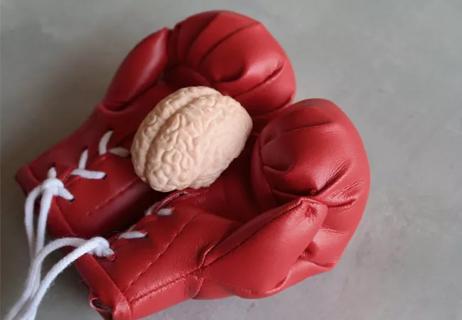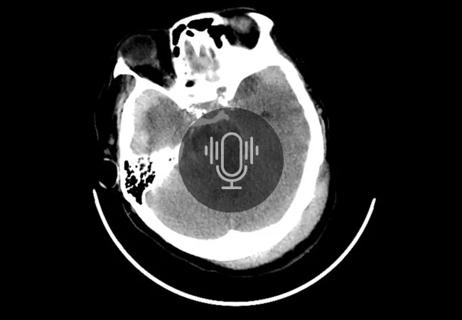Case report of a young man with severe traumatic brain injury and cognitive deficits

In early March 2023, a 34-year-old man skiing in the French Alps lost control, crashed into a rocky ditch and was rendered unconscious. He was intubated and ventilated on the slopes and then airlifted to a local hospital. He suffered multiple injuries, including a broken collarbone, five broken ribs and a traumatic subarachnoid hemorrhage.
Advertisement
Cleveland Clinic is a non-profit academic medical center. Advertising on our site helps support our mission. We do not endorse non-Cleveland Clinic products or services. Policy
“In one moment, his life completely changed,” says Arvind Chandratheva, BM, BSc (Hons), MRCP, DPhil, a consultant neurologist at Cleveland Clinic London Hospital. “His brain injuries were among the most severe and the most worrying of consequences to a young man who had been living life to the fullest.”
The patient spent three days on a ventilator in an intensive care unit in a Paris hospital before being extubated and moved to a step-down unit. He was repatriated to the Royal London Hospital and then transferred to Cleveland Clinic London’s inpatient rehabilitation unit six days later.
“He had started making a very good recovery physically,” says Dr. Chandratheva, who was part of a multidisciplinary team that oversaw the patient’s rehabilitation. “Our challenges were ensuring we could continue to encourage his physical recovery whilst allowing him to understand the hidden deficits he was less aware of and also support him on a very intensive program of cognitive rehabilitation.”
Upon the patient’s admission to Cleveland Clinic London, brain MRI confirmed a traumatic brain injury (TBI) with features of a diffuse axonal injury and microhemorrhages.
The clinical team tasked with the patient’s cognitive rehabilitation included neurology, nursing, occupational therapy, physiotherapy, neuropsychology, and speech and language therapy. Clinicians from these areas had an initial meeting when the patient was admitted to determine the plan of care, followed by weekly meetings to track his progress. The team also met to apprise the family of the patient’s plan of care and expectations for rehabilitation.
Advertisement
Simultaneously, appropriate specialists monitored the patient’s recovery from other injuries. Orthopaedics provided conservative treatment and pain management for rib fractures, and endocrinology monitored and treated an adrenal hematoma.
When the patient began rehab, he had upper limb weakness and numerous cognitive deficits. He had difficulty concentrating, reading and communicating verbally. The care team administered a variety of validated tools to assess the patient and track his progress throughout his hospital stay. The cognitive assessments included:
The patient was also given functional assessments to gauge his problem-solving skills related to everyday activities, ranging from managing money to making meals.
Advertisement
“These sound like straightforward tasks, but we know from young patients with TBI that some of the most challenging impairments — the ones that limit return to normal function, work, relationships and that feeling of being you — are the nonmotor symptoms,” says Dr. Chandratheva.
During the patient’s three-and-a-half-week stay in inpatient rehab at Cleveland Clinic London, he participated in structured sessions across disciplines six days a week for approximately four hours each day. This included sessions with physiotherapy to regain strength, balance and coordination, as well as with occupational therapy to work on tasks of daily living. He also met with a speech therapist.
“When he first came to us, he had some word-finding difficulties, particularly for lower-frequency words you might use in conversation,” says Katrina Clarkson, clinical lead speech and language therapist. “We also picked up on some reading difficulties involving inferential reading — being able to read between the lines — which obviously would significantly impact his ability to return to work and deal with nuances in the workplace.”
Toward the end of the patient’s inpatient rehab, the caregiving team took him out in the community to practice tasks such as navigating new locations, talking to strangers and riding the London Tube. The team also met with the patient’s employer to explain what to expect when he returned to work, and they took him to his office to simulate a workday and ascertain any challenges so they could address them in therapy.
Advertisement

The extensive, multidisciplinary rehab was successful. “The patient went from being unconscious on the side of the ski slope with severe traumatic brain injuries in early March to being discharged from inpatient rehab in April and going home to live on his own with minimal support,” says Dr. Chandratheva. “During a period of outpatient rehab with us over the next few months, he transitioned back to work with very few deficits.”
In August 2023 the patient met one of his long-term goals — delivering the best man’s speech at a friend’s wedding.
Dr. Chandratheva attributes the patient’s recovery to five main factors:
Advertisement
“Using innovative approaches among a very experienced team has led to a remarkable recovery,” Dr. Chandratheva concludes.
Advertisement

New guidelines from Brain Trauma Foundation urge early and aggressive treatment

Criteria-based diagnosis of traumatic encephalopathy syndrome predicts changes in brain volumes and cognition

Care guidelines have been crucial to progress in TBI care over the past 25 years

Tasked-based therapy improves social connection and quality of life

Today’s research helps illuminate tomorrow’s needs

Neurology nursing calls for skill, emotional intensity and more

Promising preclinical research indicates functional motor recovery is durable

Cleveland Clinic researchers collaborate with Microsoft to create a product ready for the field